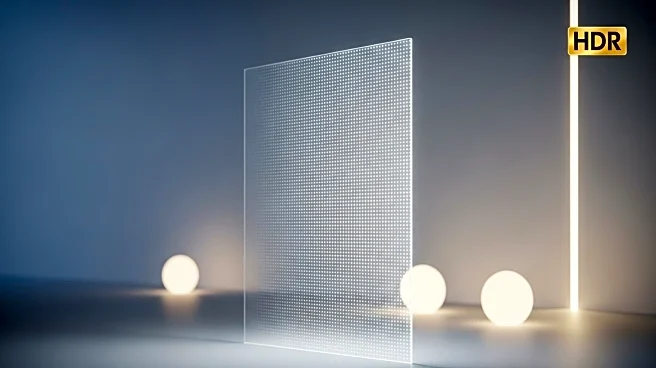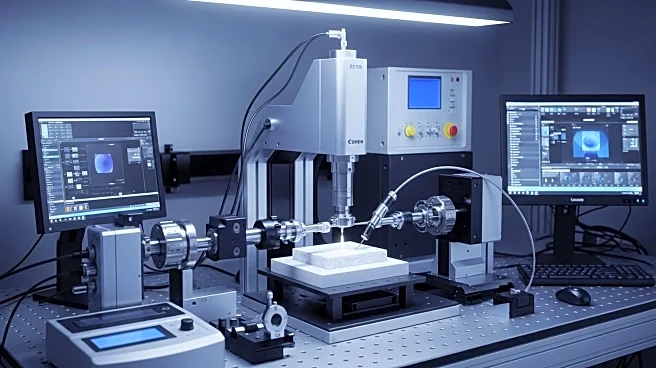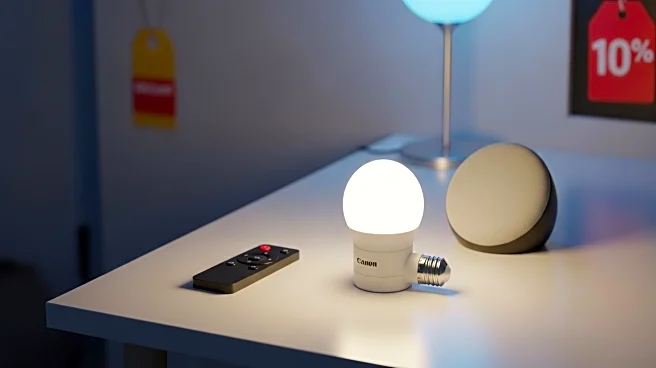What is the story about?
What's Happening?
A team of scientists has developed an ultra-thin LED that emits a sunlike glow, potentially revolutionizing lighting applications in phone and computer screens. The LED, nearly as thin as paper, uses quantum dots to replicate the solar spectrum, providing a natural and soothing light. The research, published in ACS Applied Materials & Interfaces, involved synthesizing quantum dots coated with zinc-sulfur shells to achieve the desired color balance. The LED is assembled on an indium tin oxide glass substrate, with layers of conductive polymers and metal oxide particles. Initial tests show the LED performs best under a 11.5-volt power supply, offering a warm white light beneficial for sleep and eye health.
Why It's Important?
This innovation addresses the growing demand for eye-friendly displays and adaptive indoor lighting, which are crucial in reducing sleep disruption caused by harsh artificial light. The ability to closely match the solar spectrum could enhance the quality of displays in electronic devices, improving user experience and potentially reducing eye strain. The technology also holds promise for horticulture and well-being applications, where wavelength-tunable light sources can optimize plant growth and human health. The development of efficient, low-voltage lighting solutions could lead to energy savings and environmental benefits.
What's Next?
Further experiments are planned to optimize the operating voltage and brightness of the quantum dot LED. The researchers aim to refine the conductive materials used in the LED to enhance its performance and reduce energy consumption. Collaboration with industries focused on display technology and lighting solutions could facilitate the integration of this innovation into commercial products, potentially transforming the market for electronic displays and indoor lighting.
Beyond the Headlines
The cultural impact of this technology may influence consumer preferences towards more natural lighting solutions, potentially driving demand for products that prioritize health and well-being. Ethical considerations include the environmental impact of manufacturing quantum dot LEDs, prompting discussions on sustainable production practices.
AI Generated Content
Do you find this article useful?













